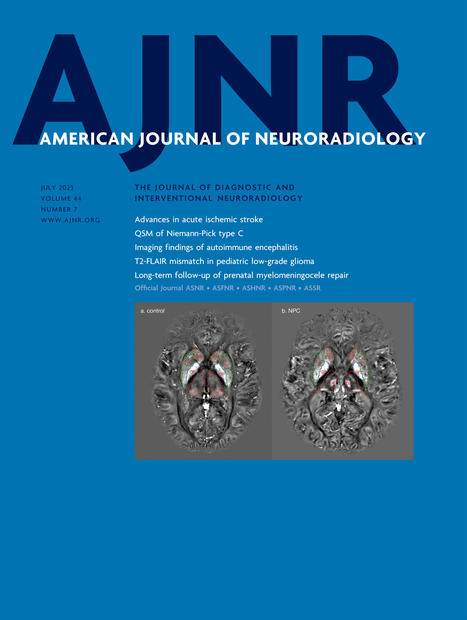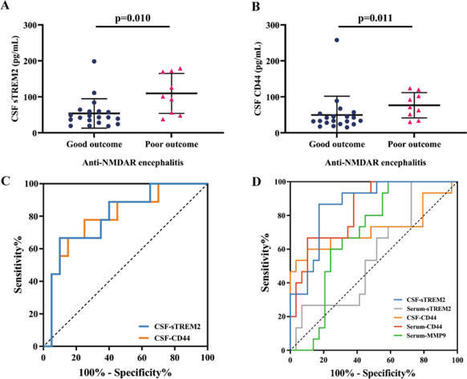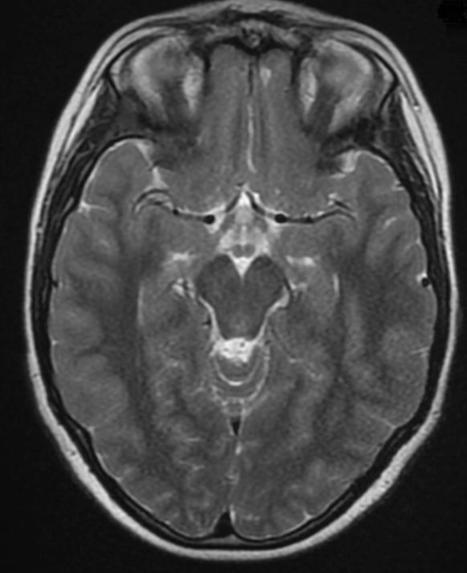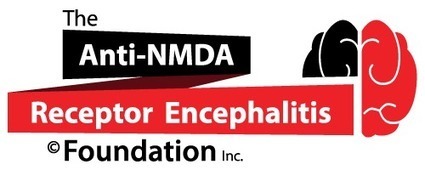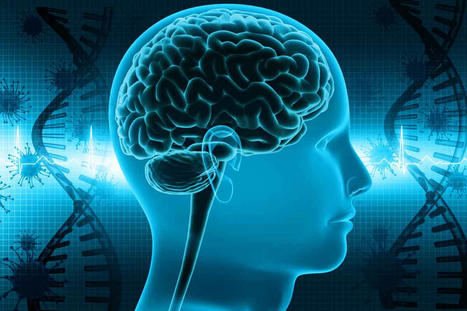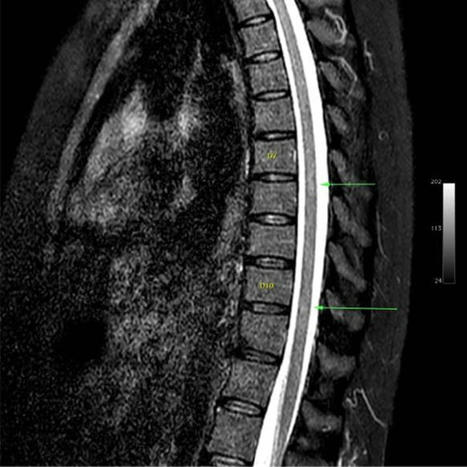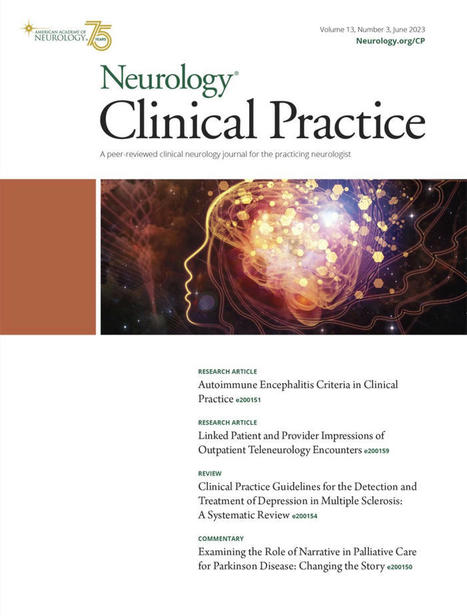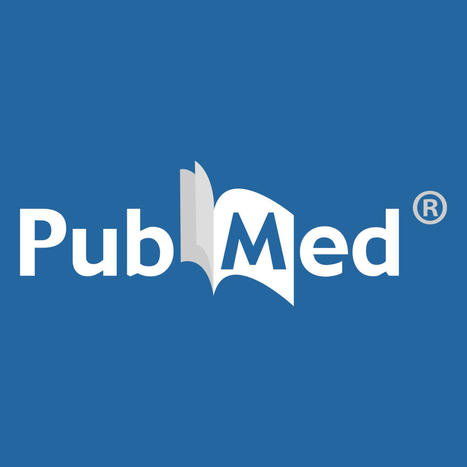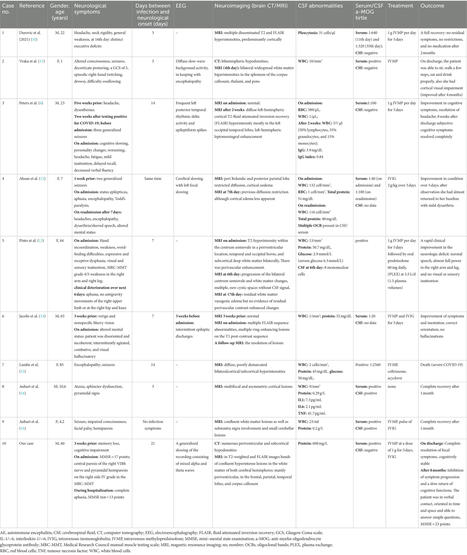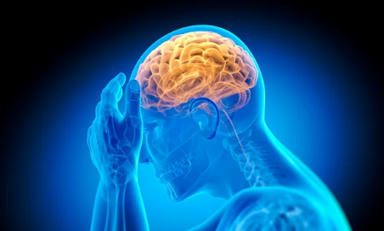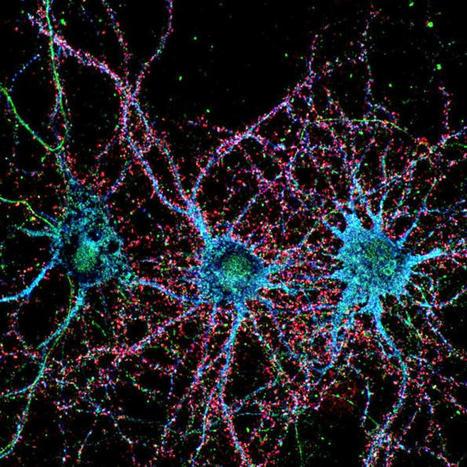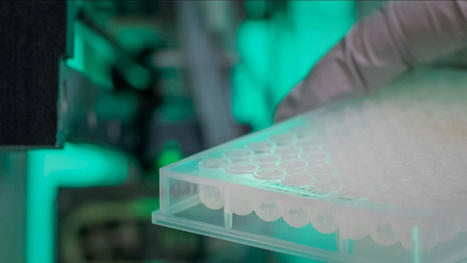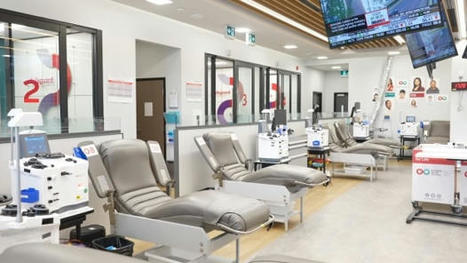Abstract Objective To create an international consensus treatment recommendation for pediatric NMDA receptor antibody encephalitis (NMDARE). Methods After selection of a panel of 27 experts with representation from all continents, a 2-step Delphi method was adopted to develop consensus on relevant treatment regimens and statements, along with key definitions in pediatric NMDARE (disease severity, failure to improve, and relapse). Finally, an online face-to-face meeting was held to reach consensus (defined as ≥75% agreement). Results Corticosteroids are recommended in all children with NMDARE (pulsed IV preferred), with additional IV immunoglobulin or plasma exchange in severe patients. Prolonged first-line immunotherapy can be offered for up to 3–12 months (oral corticosteroids or monthly IV corticosteroids/immunoglobulin), dependent on disease severity. Second-line treatments are recommended for cases refractory to first-line therapies (rituximab preferred over cyclophosphamide) and should be considered about 2 weeks after first-line initiation. Further immunotherapies for refractory disease 1-3 months after second-line initiation include another second-line treatment (such as cyclophosphamide) and escalation to tocilizumab. Maintenance immune suppression beyond 6 months (such as rituximab redosing or mycophenolate mofetil) is generally not required, except for patients with a more severe course or prolonged impairments and hospitalization. For patients with relapsing disease, second-line and prolonged maintenance therapy should be considered. The treatment of NMDARE following herpes simplex encephalitis should be similar to idiopathic NMDARE. Broad guidance is provided for the total treatment duration (first line, second line, and maintenance), which is dictated by the severity and clinical course (i.e., median 3, 9 and 18 months in the best, average, and worst responders, respectively). Recommendations on the timing of oncologic searches are provided. Conclusion These international consensus recommendations for the management of pediatric NMDARE aim to standardize the treatment and provide practical guidance for clinicians, rather than absolute rules. A similar recommendation could be applicable to adult patients. Glossary HSE=herpes simplex virus encephalitis; IQR=interquartile range; IgG=immunoglobulin G; IVIg=IV immunoglobulin; NMDARE=NMDA receptor antibody encephalitis; TPE=therapeutic plasma exchange NMDA receptor antibody encephalitis (NMDARE) is one of the most common autoimmune encephalitides, characterized by a recognizable constellation of neurologic and psychiatric features alongside positive NMDAR antibodies.1,2 NMDARE mostly affects children and young adults, particularly females. It may be very severe in the acute phase with a mortality of about 5%, relapses occur in about 15% of patients, and the final physician-assessed functional outcome is generally favorable, although neuropsychological and psychiatric sequelae are relatively common.2,3 The use of immunotherapies has been shown to improve outcomes,2,4,-,6 especially with early administration.2,4,6,7 In addition, immunotherapies reduce the risk of relapses.2,8,9 However, several aspects of treatment remain incompletely clarified, and treatment strategies are still heterogeneous, especially with regard to second-line and long-term immunotherapies.10,11 Indeed, although a number of reviews have been published,12,-,18 no randomized controlled trials or consensus guidelines for the treatment of NMDARE are available. With support from the Autoimmune Encephalitis Alliance, we aimed to create a consensus recommendation for the treatment of pediatric NMDARE, which was pragmatic and relevant to a global community and could serve as a practical decision support tool for the clinician confronted with this rare and challenging condition. Notably, the present document is intended as a recommendation guideline rather than absolute rules, given the limited evidence supporting most treatment statements. Although this document is focused on immunotherapy and to some extent symptomatic management, there are multiple outstanding issues in the management of pediatric NMDARE, such as education around the diagnosis and rehabilitation of patients after the acute phase, which are beyond the scope of this current article. Methods Establishment of a Consensus Expert Panel A steering committee (R.C.D., M.L., T.T., M.N., and M.E.) carefully selected a panel of 27 experts with representation from all continents (later referred to as “the Panel”), and based on the individual: (1) being a specialist (usually pediatric neurologist or rheumatologist) with clinical and/or research expertise in pediatric NMDARE; these experts were identified as lead clinical researchers in the field based on the systematic review conducted before the consensus recommendations project (paper in preparation), or were nominated by national child neurology societies; (2) having a publication track record in the field of pediatric autoimmune encephalitis/CNS disease; (3) being committed to completing 2 Delphi studies (approximately 45 minutes each),19,20 and participating in a 2-hour face-to-face/online meeting to reach consensus. The 27 experts were pediatric neurologists (n = 23) or pediatric rheumatologists (n = 4), from North America (n = 9), South America (n = 1), Europe (n = 9), Asia (n = 6), Oceania (n = 1), and Africa (n = 1). In addition, patient representatives (parents, n = 2), a member of the Autoimmune Encephalitis Alliance (n = 1), and adult neurology experts in NMDARE (n = 2, J.D. and S.R.I.) were invited to provide input in the later stages of the process. Delphi Method A 2-step Delphi method was adopted to develop the consensus of relevant statements, similar to the method used by the European League Against Rheumatism.21 A document with key definitions in pediatric NMDARE (disease severity, failure to improve, and relapse) used in the Delphi statements was shared online with the Panel (January 2020) before the first Delphi questionnaire. A revised version of the modified Rankin Scale22 was used, to be more applicable in children. The first Delphi questionnaire (Delphi 1, eAppendix 1, links.lww.com/NXI/A530) included key statements on the treatment of pediatric NMDARE, which were created based on the steering committee's clinical practice and the available literature and was sent out to the Panel in February 2020 using a web-based survey tool (SurveyMonkey.com). The Panel members were asked to vote on each statement of the first Delphi questionnaire according to a 5-point Likert scale (strongly agree/agree/neither agree nor disagree/disagree/strongly disagree) and provide open text comments as appropriate. Consensus was defined as an agreement by at least 75% of the participants (i.e., ≥75% agree/strongly agree or ≥75% disagree/strongly disagree). Twenty-six of 27 experts completed Delphi 1; then, the statements were revised according to the Panel's responses and comments, and statements that reached consensus were collated into a second Delphi document (Delphi 2). In this second Delphi survey, time durations were added (i.e., total duration of immunotherapy in NMDARE or timing of treatment escalation), and median, interquartile range (IQR), and range were calculated. The Delphi 2 statements were shared with 2 adult experts (J.D. and S.R.I.), with the Autoimmune Encephalitis Alliance representative and family representatives for further input. Delphi 2 was completed by 26 of the 27 experts by online survey in May 2020 (eAppendix 1, links.lww.com/NXI/A530), and final drafted recommendations were created. Face-to-Face Meeting The drafted recommendations were then voted on during a 2-hour online consensus meeting via the platform Zoom (zoom.us) on November 3, 2020, and included 26 participants from the expert Panel, with representatives from all continents. Each recommendation was voted on via the platform sli.do with the outcomes agree, do not agree, or abstain. The definitions used in the recommendations and the drug regimens were also voted on for consensus. As before, consensus was defined as an agreement by at least 75% of the participants. The number of voters varied (22-26 panelists) for the statements due to connectivity issues during the meeting. The statements that reached consensus were collated and are presented. Data Availability The Delphi questionnaires used to create the consensus-based recommendations for the treatment of pediatric NMDARE are provided in eAppendix 1 (links.lww.com/NXI/A530). Results eAppendix 1 (links.lww.com/NXI/A530) provides the Delphi 1 and Delphi 2 questionnaires and answers. Only final recommendations that reached consensus at the final face-to-face meeting are presented in Tables 1–4 and the Figure. Table 1 shows the key definitions in pediatric NMDARE (disease severity, failure to improve, and relapse), which reached consensus support. In addition, to aid clinicians with less experience in the management of NMDARE, definitions for best, average, and poorest responders are described (Table 5). Tables 2 and 3 show the recommendations for the treatment of pediatric NMDARE and are subdivided into general management principles (Table 2, 2.1), treatment of first encephalitis event including first-line, second-line, and maintenance immunotherapy (Table 2, 2.2–2.4), overall duration of immunotherapy at first event (Table 2, 2.5), treatment at relapse (Table 3, 3.1), treatment of NMDARE triggered by preceding herpes simplex virus encephalitis (HSE) (Table 3, 3.2), symptomatic treatments (Table 3, 3.3), and oncologic searches (Table 3, 3.4). Table 4 shows the recommendations for immunotherapy doses and regimens.23,-,25 The Figure provides a therapeutic pathway for guidance. View inline View popup Table 1 Definitions Used in the Consensus Recommendations for the Treatment of Pediatric NMDAR Antibody Encephalitis (NMDARE) (Tables 2 and 3) View inline View popup Table 2 Consensus-Based Recommendations on the Treatment of First Event of Pediatric NMDAR Antibody Encephalitis (NMDARE): General Principles (2.1), First-Line Immunotherapy (2.2), Second-Line Immunotherapy (2.3), Maintenance Immune Suppression (2.4), and Overall Duration of Immunotherapy (2.5) View inline View popup Table 3 Consensus-Based Recommendations on the Treatment of Pediatric NMDAR Antibody Encephalitis (NMDARE): NMDARE Relapse (3.1), Herpes Simplex Virus Encephalitis Followed by NMDARE (3.2), Symptomatic Therapies (3.3), and Oncologic Searches (3.4) View inline View popup Table 4 Treatment Regimens and Doses for Pediatric NMDAR Antibody Encephalitis (NMDARE) (95% Agreement, 22 Voting—Final Face-to-Face Agreement) Figure International Consensus Recommendations for the Treatment of First Event of Pediatric NMDAR Antibody Encephalitis (NMDARE) View inline View popup Table 5 Definition of Responder to Immunotherapy Discussion Evidence on treatment of NMDARE is restricted to retrospective and some prospective descriptive studies. No consensus-based treatment guidelines have previously been proposed. Hence, our purpose was to create international consensus-based recommendations for the treatment of pediatric NMDARE, with expertise from an international group of clinical and academic pediatric neurologists and rheumatologists. Our vision was to have a global approach with applicability across all health care settings; therefore, the expert Panel included representatives from all continents. We also wanted this document to be useful for clinicians less experienced in the treatment of autoimmune encephalitis; hence, a practical and detailed approach was adopted wherever possible, including definitions of failure to respond, and timing of treatment escalation. Indeed, although the management of pediatric NMDARE should ideally be guided by a pediatric neurology team in a center with multidisciplinary expertise in NMDARE, this may not always be possible, particularly in the acute phase of the disease. Our recommendations begin with general management principles, highlighting the importance of early diagnosis and careful communication with the family (Table 2, 2.1). The importance of raising awareness of this disorder, which may present to psychiatrists and emergency physicians as well as neurologists, cannot be overemphasized, and the diagnostic criteria26 and modification for children,27 along with the distinctive clinical characteristics,12,28,29 may aid an expeditious diagnosis. Similarly, families need to be informed of the expected or potential disease evolution, the treatment possibilities, and the often long and demanding course of the illness. Understanding the timeline of the disease and the speed of recovery is one of the greatest challenges of this disease, and it is essential for clinicians and family members to appreciate that the typical course is of little change (or worsening) in the first weeks and slow improvements in the following months, and improvements may continue into the second year. As regards first-line immunotherapy (Table 2, 2.2), there was consensus that corticosteroids are the first agent to be used in pediatric NMDARE, with IV use (i.e., IV methylprednisolone) preferred over oral use (i.e., oral prednisone), although high-dose oral administration of corticosteroids is a good alternative, particularly if IV access is a problem. In high-income countries, therapeutic plasma exchange (TPE) and/or IV immunoglobulin (IVIg) are often used in conjunction with corticosteroids.30 Although some physicians use TPE or IVIg at the same time as corticosteroids, other administer them sequentially, with more severe patients often prompting a more aggressive combined treatment or rapid escalation. TPE was recommended for patients with severe disease, although it is recognized that TPE can be associated with more severe complications (e.g., central line infection) compared with IVIg.31,32 TPE was recommended over immunoadsorption, where there is less evidence.33,34 In general, ongoing corticosteroids are continued in the first months of disease, preferably as pulses, or alternatively oral tapers. Longer or repeated IVIg courses may be continued monthly for 3–6 months, depending on severity and availability, whereas monthly pulsed oral dexamethasone or IV methylprednisolone, or even ACTH, for 3-6 months may be used in resource-limited settings. In patients who are failing to improve (definition in Table 1) approximately 2 weeks after initiation of 2 or more first-line therapies, second-line treatment is recommended over further first-line therapies. Second-line treatments are recommended especially in patients with severe disease, with rituximab now generally preferred over cyclophosphamide (Table 2, 2.3). Rituximab dosing protocols were all equally accepted (Table 4) as there are no data to support one protocol over another. There is evidence suggesting that use of second-line immunotherapy improves outcome in patients failing to improve after first-line therapy2 and that second-line therapy reduces the risk of relapses.8,9,13 Moreover, earlier initiation of rituximab also seems more favorable compared with late treatment.7 The use of second-line immunotherapy is still variable globally and considerably less frequent in some countries. For instance, rituximab use is 0%–5.5% in Chinese cohorts35,-,37 and more variable in India (0%–61%),38,-,40 although with generally favorable outcomes, which suggests the outcomes described in the published literature may be affected by referral bias, publication bias, or ethnic vulnerability to worse outcomes.41 The specific approaches toward the use of second-line immunotherapy varied within the Panel, with some clinicians supporting the use of rituximab in all patients with NMDARE and others reserving it to cases with severe disease or failure to improve (Table 1). The consensus opinion was that second-line therapy is not needed in all patients, but only in patients with severe disease and those who fail to improve. One of the greatest challenges is deciding the timing of escalation after 1 second-line therapy. There was consensus that in the patient failing to improve 1-3 months (generally >6 weeks) following initiation of the first second-line immunotherapy, another second-line therapy such as cyclophosphamide if rituximab was used first can be considered. In the patient who fails rituximab, cyclophosphamide is generally recommended as an escalation agent, although some members of the Panel have increasing interest in tocilizumab as an alternative escalation therapy due to a more favorable perceived safety profile.42,-,44 Other escalation treatments have been reported in the literature, such as IV/intrathecal methotrexate with intrathecal corticosteroids and subcutaneous/IV bortezomib; these have more limited evidence, but can be used according to the local treating center's expertise.41,43,-,57 The patient who has severe disease and is failing to improve remains a major challenge. The clinician needs to balance the risk of severe disease (such as being on the intensive care unit) with the risk of treatment side effects, in the knowledge that NMDARE symptoms may take many weeks or months to improve.2,7 Indeed, unlike in acute disseminated encephalomyelitis, when treatment often results in rapid improvements within days, in NMDARE, the improvements are slow and continue for ≥24 months after the acute phase.2 Therefore, allowing treatments to have their effect, including their combined actions, is important to avoid hasty therapeutic decisions. In general, second-line agents such as rituximab or cyclophosphamide should be given 1-3 months before making judgment on effect, with 6 weeks being a broadly accepted guideline. The timing of escalation is very challenging and influenced by severity, age, risk-benefit ratio, treating center's experience, and access to treatments. Overall, for patients in the intensive care unit, where there may be multiple additional risk factors,7 earlier escalation seems reasonable. Anecdotal reports from our expert group of benefit of treatment with rituximab or tocilizumab years after onset suggest that in the patient who continues to have major impairments, further immunotherapies are warranted within reason, although there are likely to be diminishing returns when treatment is used later in the disease course. In the patient who has failed to improve a year or more after treatment, it is sometimes difficult to determine residual sequelae from ongoing inflammation. In this situation, CSF re-examination for ongoing neuroinflammation (i.e., persistent pleocytosis, intrathecal oligoclonal bands, elevated immunoglobulin G [IgG] index, or CSF neopterin)58 may help with decision making and the risk vs benefit consideration of an empiric retrial or immunotherapy (pulsed corticosteroid for 3 months, IVIg monthly, rituximab reinduction, or tocilizumab). CSF NMDAR antibody titers seem to correlate better with disease course compared with serum antibodies,59,60 but there is not a strong correlation between titer and clinical course in the individual patient, and antibodies can persist long after recovery.60,e1,e2 Although all stages of management of NMDARE may be challenging even for experienced physicians, this is especially true when dealing with a severe patient failing to improve, and a second opinion may be useful and help the clinician make further therapeutic decisions. Organizations such as the Autoimmune Encephalitis Alliance (aealliance.org/), the Encephalitis Society (encephalitis.info/), and the Anti NMDA Receptor Encephalitis Foundation Inc. (antinmdafoundation.org/) may help connect with experts. There was overall agreement that maintenance immune suppression beyond 6 months from onset is generally not needed (Table 2, 2.4), apart from patients with more severe course or prolonged impairments and hospitalization. Indeed, literature data show that early and adequate treatment, including use of second-line therapies when appropriate, is the priority,2 rather than prolonged maintenance immune suppression. Moreover, the relatively low relapse rate of NMDARE is in significant contrast with that of other disorders such as neuromyelitis optica, where chronic immune suppression is recommended from the first event. When giving immune suppression for more than 6 months, rituximab redosing was generally preferred, although mycophenolate mofetil is also used,9,36,e3-e5 and there is little evidence to suggest superiority of either. With regard to rituximab redosing, most experts recommend redosing when CD19 cells repopulate, in view of the variability in the time to B-cell repopulation between individuals.e6 An alternative approach is to redose rituximab at regular 6-month intervals similar to practice in adult patients with neuromyelitis optica.e7,e8 There was no consensus in the dosage and frequency of redosing, with some experts using the same dose/regimen used at induction and others using lower doses (Table 4). As regards mycophenolate mofetil, given its slow onset of efficacy, there should initially be overlap with other immunotherapies (i.e., oral corticosteroids) for 3-6 months after commencement.e3 Other maintenance agents, such as oral azathioprine and methotrexate, are sometimes used for maintenance immune suppression, although the paucity of experience precluded consensus recommendations from our expert group. In resource-poor countries, the Panel also agreed that prolonged first-line therapy (with IV pulsed methylprednisolone, dexamethasone, or IVIg) can be used as an alternative form of maintenance (>6 months) immunotherapy, if rituximab and mycophenolate mofetil are not available. There was agreement in the need for a more aggressive and prolonged treatment approach in patients with relapsing disease (Table 3, 3.1), with a lower threshold for second-line and maintenance treatments (rituximab or mycophenolate) and more prolonged overall immunotherapy duration. Indeed, the median overall duration of immunotherapy at first event of pediatric NMDARE was recommended to be about 3 months (IQR 3–6 months) in the best responders, 9 months (IQR 6–12 months) in the average responders, 18 months (IQR 12–24 months) in the poorest responders (Table 2, 2.5), and 12–24 months after a relapse, acknowledging patient severity and management variables (Table 3, 3.1). We acknowledge that the definition of “best,” “average,” and “poorest” is dependent on experience of the clinician; therefore, some guidance is provided in Table 5. Although not the focus of this work, the Panel acknowledges that infectious risk mitigation strategies are key to ensure the patients' safety while receiving immunotherapy, especially close monitoring for infections and adherence to hospital infection control protocols to prevent hospital acquired infection. In selected patients on prolonged high-dose corticosteroids, multiple second-line or escalation immunotherapies, prophylactic trimethoprim-sulfamethoxazole for Pneumocystis carinii pneumonia may be required. In patients with low IgG levels and recurrent infections despite prophylactic antibiotics, immunoglobulin supplementation may be required. As regards patients with relapse of neurologic symptoms after HSE (Table 3, 3.2), acyclovir should be administered promptly until HSE recurrence is excluded, while maintaining a high index of suspicion for an underlying autoimmune etiology. The Panel agreed that if autoimmune encephalitis is confirmed after HSE, immunotherapy should be used in a similar way to idiopathic/naive NMDARE.e9,e10 The Panel acknowledged that although immunotherapy is the therapeutic priority to treat the underlying disease, symptomatic management (such as antiseizure medications) is equally important (Table 3, 3.3). However, symptom management may be challenging and requires multidisciplinary expertise.e11 As stated in the recommendations, there was consensus on a preferred list of medications found to be useful in the treatment of behavior agitation and dyskinesia (full list of medications considered is detailed in eAppendix 1, links.lww.com/NXI/A530). Caution was also drawn to the observation that the use of antipsychotics in pediatric NMDARE may worsen dyskinesia or induce a neuroleptic malignant syndrome. Although paraneoplastic etiology is rare in prepubertal children and in boys,2,9,e12 oncologic searches for ovarian teratoma (and neural crest tumors in children aged <5 years) are mandatory in all children with NMDARE, should be performed early, and be completed in the first days-weeks after admission (Table 3, 3.4). Ultrasound or MRI of the abdomen and pelvis and CT or MRI of the chest are the recommended imaging modalities, and collaboration with local oncologists and radiologists will help guide the need for additional studies (e.g., PET scan) to optimize diagnostic yield in patients with severe disease or a failure to improve. The timely identification of a tumor and its subsequent removal may improve the outcome considerably, although the prognosis also depends on the type of tumor.2,e12 The Panel reached agreement on oncologic searches that should be performed in all patients, both at baseline and in patients who fail to improve or relapse, with particular focus on postpubertal females in whom ovarian teratoma screening and longitudinal surveillance for ovarian teratoma should be strongly pursued. Although not the main aim of this consensus document, the Panel acknowledged that adequate rehabilitation after the acute phase of NMDARE is essential and may improve outcomes. We strongly support the need for rehabilitation to be provided in a center familiar with rehabilitating young people with acquired brain injury such as encephalitis or traumatic brain injury, acknowledging that improvements may continue for up to 24 months. Rehabilitation often includes focus on cognitive and behavioral problems (including executive dysfunction and fatigue) post-NMDARE. In view of the relative rarity of this condition, any recommendation or guideline for the treatment of pediatric NMDARE is inevitably based on limited evidence; therefore, this document should be intended as a recommendation meant to provide guidance rather than absolute rules, and it should not be used to prevent access to therapies if these are recommended by a patient's physician. Moreover, by putting together international experts from very different settings, the present work highlighted heterogeneity in the management of this condition. The differences stimulated discussion and reflection, and there was still consensus around most aspects of pediatric NMDARE treatment. Although the experts included people with broad international expertise, the opinions remain vulnerable to anecdote and potential bias related to referral of complicated or atypical patients. Despite these limitations, we strove to create an international consensus-based recommendation aimed at supporting the clinician in the treatment of pediatric NMDARE, with a dedicated global approach for all health care settings. We hope that with the aid of recently released diagnostic criteria,26,27 the present treatment recommendation may contribute to a more systematic approach, resulting in more comparable data internationally, which may generate better quality evidence. Nonetheless, there are still major unresolved issues, which should represent the focus of future research. Study Funding There was funding commitment for the face to face meeting by the Autoimmune Encephalitis Alliance (AEA), which due to COVID-19 was not needed, as the face-to-face meeting was virtual. AEA has supported costs of open access for journal publication. M. Eyre is supported by Action Medical Research and the British Paediatric Neurology Association. T. Armangue is supported by research grants Instituto Carlos III/FEDER, Spain (PI18/00486) and Generalitat de Catalunya PERIS (SLT006/17/00362). S.R. Irani is supported by the Wellcome Trust (104079/Z/14/Z), the UCB-Oxford University Alliance, BMA Research Grants Vera Down grant (2013) and Margaret Temple (2017), Epilepsy Research UK (P1201), the Fulbright UK-US commission (MS-Society research award), and by the NIHR Oxford Biomedical Research Centre. The views expressed are those of the author(s) and not necessarily those of the NHS, the NIHR, or the Department of Health). RCD is supported by NHMRC Investigator grant (Australia) and Petre Foundation. Disclosure M. Nosadini, T. Thomas, M. Eyre, B. Anlar, T. Armangue, S.M. Benseler, T. Cellucci, K. Deiva, and W. Gallentine report no disclosures relevant to the manuscript. G. Gombolay receives part-time salary support from the Centers for Disease Control and Prevention to review acute flaccid myelitis cases for surveillance. M.P. Gorman has received research funding from Pfizer and Roche for research unrelated to the current topic. Y. Hacohen, Y. Jiang, B.C. Lim, E. Muscal, and A. Ndondo report no disclosures relevant to the manuscript. R. Neuteboom participates in treatment studies in pediatric MS by Novartis and Sanofi-Genzyme and received consultation fees from Novartis, Zogenix, and Sanofi-Genzyme. K. Rostásy, H. Sakuma, and S. Sharma report no disclosures relevant to the manuscript. S.N. Tenembaum participates as member of the NMO Scientific Advisory Committee (Genentech-Roche Inc.) and chair of the NMO Relapse Adjudication Committee (Alexion Pharmaceuticals Inc.); she has received speaker honoraria from Biogen Idec Argentina, Merck Serono LATAM, Genzyme, Novartis Argentina, and Novartis Pharma Inc. H.A. Van Mater and E. Wells report no disclosures relevant to the manuscript. R. Wickstrom has received consultation fees from Roche, Novartis, and Octapharma. A.K. Yeshokumar reports no disclosures relevant to the manuscript. S.R. Irani is a coapplicant and receives royalties on patent application WO/210/046716 (U.K. patent no., PCT/GB2009/051441) entitled “Neurological Autoimmune Disorders” (the patent has been licensed for the development of assays for LGI1 and other VGKC-complex antibodies) and on an unlicensed patent to improve detection of autoantibodies. J. Dalmau reports no disclosures relevant to the manuscript. M. Lim has received consultation fees from CSL Behring, Novartis, and Octapharma; travel grants from Merck Serono; and was awarded educational grants to organize meetings by Novartis, Biogen Idec, Merck Serono, and Bayer. R.C. Dale reports no disclosures relevant to the manuscript. Go to Neurology.org/NN for full disclosures. Acknowledgment The authors thank Kimberley de Haseth from AEA and the De Vivero family for support and advice. Appendix Authors Footnotes Go to Neurology.org/NN for full disclosures. Funding information is provided at the end of the article. The Article Processing Charge was funded by Wellcome Trust. Received February 14, 2021. Accepted in final form May 21, 2021. Copyright © 2021 The Author(s). Published by Wolters Kluwer Health, Inc. on behalf of the American Academy of Neurology. This is an open access article distributed under the terms of the Creative Commons Attribution License 4.0 (CC BY), which permits unrestricted use, distribution, and reproduction in any medium, provided the original work is properly cited. References 1.↵Dalmau J, Gleichman AJ, Hughes EG, et al. Anti-NMDA-receptor encephalitis: case series and analysis of the effects of antibodies. Lancet Neurol. 2008;7(12):1091-1098.OpenUrlCrossRefPubMed 2.↵Titulaer MJ, McCracken L, Gabilondo I, et al. Treatment and prognostic factors for long-term outcome in patients with anti-NMDA receptor encephalitis: an observational cohort study. Lancet Neurol. 2013;12(2):157-165.OpenUrlCrossRefPubMed 3.↵de Bruijn MAAM, Aarsen FK, van Oosterhout MP, et al. Long-term neuropsychological outcome following pediatric anti-NMDAR encephalitis. Neurology. 2018;90(22):e1997-e2005.OpenUrl 4.↵Irani SR, Bera K, Waters P, et al. N-methyl-D-aspartate antibody encephalitis: temporal progression of clinical and paraclinical observations in a predominantly non-paraneoplastic disorder of both sexes. Brain. 2010;133(pt 6):1655-1667.OpenUrlCrossRefPubMed 5.↵Hacohen Y, Absoud M, Hemingway C, et al. NMDA receptor antibodies associated with distinct white matter syndromes. Neurol Neuroimmunol Neuroinflamm. 2014;1(1):e2. 6.↵Byrne S, Walsh C, Hacohen Y, et al. Earlier treatment of NMDAR antibody encephalitis in children results in a better outcome. Neurol Neuroimmunol Neuroinflamm. 2015;2(4):e130. 7.↵Dale RC, Brilot F, Duffy LV, et al. Utility and safety of Rituximab in pediatric autoimmune and inflammatory CNS disease. Neurology. 2014;83(2):142-150.OpenUrlCrossRefPubMed 8.↵Gabilondo I, Saiz A, Galán L, et al. Analysis of relapses in anti-NMDAR encephalitis. Neurology. 2011;77(10):996-999.OpenUrlCrossRefPubMed 9.↵Nosadini M, Granata T, Matricardi S, et al. Relapse risk factors in anti-N-methyl-D-aspartate receptor encephalitis. Dev Med Child Neurol. 2019;61(9):1101-1107.OpenUrl 10.↵Bartolini L, Muscal E. Differences in treatment of anti-NMDA receptor encephalitis: results of a worldwide survey. J Neurol. 2017;264(4):647-653.OpenUrl 11.↵Kahn I, Helman G, Vanderver A, Wells E. Anti-N-methyl-d-aspartate (NMDA) receptor encephalitis. J Child Neurol. 2017;32(2):243-245.OpenUrl 12.↵Dalmau J, Lancaster E, Martinez-Hernandez E, Rosenfeld MR, Balice-Gordon R. Clinical experience and laboratory investigations in patients with anti-NMDAR encephalitis. Lancet Neurol. 2011;10(1):63-74.OpenUrlCrossRefPubMed 13.↵Nosadini M, Mohammad SS, Ramanathan S, Brilot F, Dale RC. Immune therapy in autoimmune encephalitis: a systematic review. Expert Rev Neurother. 2015;15(12):1391-1419.OpenUrlCrossRefPubMed 14.↵Lancaster E. The diagnosis and treatment of autoimmune encephalitis. J Clin Neurol. 2016;12(1):1-13.OpenUrlCrossRefPubMed 15.↵Dale RC, Gorman MP, Lim M. Autoimmune encephalitis in children: clinical phenomenology, therapeutics, and emerging challenges. Curr Opin Neurol. 2017;30(3):334-344.OpenUrlPubMed 16.↵Shin YW, Lee ST, Park KI, et al. Treatment strategies for autoimmune encephalitis. Ther Adv Neurol Disord. 2017;11:1756285617722347.OpenUrl 17.↵Zuliani L, Nosadini M, Gastaldi M, et al. Management of antibody-mediated autoimmune encephalitis in adults and children: literature review and consensus-based practical recommendations. Neurol Sci. 2019;40(10):2017-2030.OpenUrl 18.↵Dalmau J, Armangué T, Planagumà J, et al. An update on anti-NMDA receptor encephalitis for neurologists and psychiatrists: mechanisms and models. Lancet Neurol. 2019;18(11):1045-1057.OpenUrlCrossRefPubMed 19.↵Linstone HA, Turoff M, eds. The Delphi Method Techniques and Applications. Addison-Wesley; 1975. 20.↵Hasson F, Keeney S, McKenna H. Research guidelines for the Delphi survey technique. J Adv Nurs. 2000;32(4):1008-1015.OpenUrlCrossRefPubMed 21.↵ter Haar NM, Oswald M, Jeyaratnam J, et al. Recommendations for the management of autoinflammatory diseases. Ann Rheum Dis. 2015;74(9):1636-1644. 22.↵van Swieten JC, Koudstaal PJ, Visser MC, Schouten HJ, van Gijn J. Interobserver agreement for the assessment of handicap in stroke patients. Stroke. 1988;19(5):604-607. 23.↵Bertsias GK, Tektonidou M, Amoura Z, et al. Joint European League Against Rheumatism and European Renal Association-European Dialysis and Transplant Association (EULAR/ERA-EDTA) recommendations for the management of adult and paediatric lupus nephritis. Ann Rheum Dis. 2012;71(11):1771-1782. 24.↵Mina R, von Scheven E, Ardoin SP, et al. Consensus treatment plans for induction therapy of newly diagnosed proliferative lupus nephritis in juvenile systemic lupus erythematosus. Arthritis Care Res (Hoboken). 2012;64(3):375-383.OpenUrl 25.↵Stingl C, Cardinale K, Van Mater H. An update on the treatment of pediatric autoimmune encephalitis. Curr Treatm Opt Rheumatol. 2018;4(1):14-28.OpenUrl 26.↵Graus F, Titulaer MJ, Balu R, et al. A clinical approach to diagnosis of autoimmune encephalitis. Lancet Neurol. 2016;15(4):391-404.OpenUrlCrossRefPubMed 27.↵Cellucci T, Van Mater H, Graus F, et al. Clinical approach to the diagnosis of autoimmune encephalitis in the pediatric patient. Neurol Neuroimmunol Neuroinflamm. 2020;7(2):e663. 28.↵Al-Diwani A, Handel A, Townsend L, et al. The psychopathology of NMDAR-antibody encephalitis in adults: a systematic review and phenotypic analysis of individual patient data. Lancet Psychiatry. 2019;6(3):235-246.OpenUrl 29.↵Varley JA, Webb AJS, Balint B, et al. The Movement disorder associated with NMDAR antibody-encephalitis is complex and characteristic: an expert video-rating study. J Neurol Neurosurg Psychiatry. 2019;90(6):724-726.OpenUrlFREE Full Text 30.↵Suppiej A, Nosadini M, Zuliani L, et al. Plasma exchange in pediatric anti-NMDAR encephalitis: a systematic review. Brain Dev. 2016;38(7):613-622.OpenUrl 31.↵Eyre M, Hacohen Y, Barton C, Hemingway C, Lim M. Therapeutic plasma exchange in paediatric neurology: a critical review and proposed treatment algorithm. Dev Med Child Neurol. 2018;60(8):765-779.OpenUrlPubMed 32.↵Eyre M, Hacohen Y, Lamb K, et al. Utility and safety of plasma exchange in paediatric neuroimmune disorders. Dev Med Child Neurol. 2019;61(5):540-546.OpenUrl 33.↵Dogan Onugoren M, Golombeck KS, Bien C, et al. Immunoadsorption therapy in autoimmune encephalitides. Neurol Neuroimmunol Neuroinflamm. 2016;3(2):e207. 34.↵Heine J, Ly LT, Lieker I, et al. Immunoadsorption or plasma exchange in the treatment of autoimmune encephalitis: a pilot study. J Neurol. 2016;263(12):2395-2402.OpenUrl 35.↵Zhang M, Li W, Zhou S, et al. Clinical features, treatment, and outcomes among Chinese children with anti-methyl-D-aspartate receptor (anti-NMDAR) encephalitis. Front Neurol. 2019;10:596.OpenUrl 36.↵Xu X, Lu Q, Huang Y, et al. Anti-NMDAR encephalitis: a single-center, longitudinal study in China. Neurol Neuroimmunol Neuroinflamm. 2019;7(1):e633. 37.↵Mo Y, Wang L, Zhu L, et al. Analysis of risk factors for a poor prognosis in patients with anti-N-methyl-D-aspartate receptor encephalitis and construction of a prognostic composite score. J Clin Neurol. 2020;16(3):438-447.OpenUrl 38.↵Raha S, Gadgil P, Sankhla C, Udani V. Nonparaneoplastic anti-N-methyl-D-aspartate receptor encephalitis: a case series of four children. Pediatr Neurol. 2012;46(4):246-249.OpenUrlCrossRefPubMed 39.↵Nagappa M, Bindu PS, Mahadevan A, Sinha S, Mathuranath PS, Taly AB. Clinical features, therapeutic response, and follow-up in pediatric anti-N-methyl-D-aspartate receptor encephalitis: experience from a tertiary care university hospital in India. Neuropediatrics. 2016;47(1):24-32.OpenUrl 40.↵Nair A V, Menon J, Kuzhikkathukandiyil P. Clinical profile and neuropsychiatric outcome in children with anti-NMDAR encephalitis. Indian Pediatr. 2019;56(3):247-249.OpenUrl 41.↵Jones HF, Mohammad SS, Reed PW, et al. Anti-N-methyl-d-aspartate receptor encephalitis in Māori and Pacific Island children in New Zealand. Dev Med Child Neurol. 2017;59(7):719-724.OpenUrl 42.↵Lee WJ, Lee ST, Shin YW, et al. Teratoma removal, steroid, IVIG, rituximab and tocilizumab (T-SIRT) in anti-NMDAR encephalitis. Neurotherapeutics. 2021;18(1):474-487. doi: 10.1007/s13311-020-00921-7.OpenUrlCrossRef 43.↵Sveinsson O, Granqvist M, Forslin Y, Blennow K, Zetterberg H, Piehl F. Successful combined targeting of B- and plasma cells in treatment refractory anti-NMDAR encephalitis. J Neuroimmunol. 2017;312:15-18.OpenUrl 44.↵Jun JS, Seo HG, Lee ST, Chu K, Lee SK. Botulinum toxin treatment for hypersalivation in anti-NMDA receptor encephalitis. Ann Clin Transl Neurol. 2017;4(11):830-834.OpenUrl 45.↵Thomas A, Rauschkolb P, Gresa-Arribas N, Schned A, Dalmau JO, Fadul CE. Anti-N-methyl-D-aspartate receptor encephalitis: a patient with refractory illness after 25 months of intensive immunotherapy. JAMA Neurol. 2013;70(12):1566-1568.OpenUrl 46.↵DeSena AD, Greenberg BM, Graves D. Three phenotypes of anti-N-methyl-D-aspartate receptor antibody encephalitis in children: prevalence of symptoms and prognosis. Pediatr Neurol. 2014;51(4):542-549.OpenUrlPubMed 47.↵DeSena AD, Noland DK, Matevosyan K, et al. Intravenous methylprednisolone versus therapeutic plasma exchange for treatment of anti-N-methyl-D-aspartate receptor antibody encephalitis: a retrospective review. J Clin Apher. 2015;30(4):212-216.OpenUrlCrossRefPubMed 48.↵Tatencloux S, Chretien P, Rogemond V, Honnorat J, Tardieu M, Deiva K. Intrathecal treatment of anti-N-Methyl-D-aspartate receptor encephalitis in children. Dev Med Child Neurol. 2015;57(1):95-99.OpenUrl 49.↵Liba Z, Kayserova J, Elisak M, et al. Anti-N-methyl-D-aspartate receptor encephalitis: the clinical course in light of the chemokine and cytokine levels in cerebrospinal fluid. J Neuroinflammation. 2016;13(1):55.OpenUrl 50.↵Behrendt V, Krogias C, Reinacher-Schick A, Gold R, Kleiter I. Bortezomib treatment for patients with anti-N-methyl-d-aspartate receptor encephalitis. JAMA Neurol. 2016;73(10):1251-1253.OpenUrl 51.↵Mehr SR, Neeley RC, Wiley M, Kumar AB. Profound autonomic instability complicated by multiple episodes of cardiac asystole and refractory bradycardia in a patient with anti-NMDA encephalitis. Case Rep Neurol Med. 2016;2016:7967526.OpenUrl 52.↵Scheibe F, Prüss H, Mengel AM, et al. Bortezomib for treatment of therapy-refractory anti-NMDA receptor encephalitis. Neurology. 2017;88(4):366-370.OpenUrlCrossRefPubMed 53.↵Schroeder C, Back C, Koc Ü, et al. Breakthrough treatment with bortezomib for a patient with anti-NMDAR encephalitis. Clin Neurol Neurosurg. 2018;172:24-26.OpenUrl 54.↵Shin YW, Lee ST, Kim TJ, Jun JS, Chu K. Bortezomib treatment for severe refractory anti-NMDA receptor encephalitis. Ann Clin Transl Neurol. 2018;5(5):598-605.OpenUrl 55.↵Keddie S, Crisp SJ, Blackaby J, et al. Plasma cell depletion with bortezomib in the treatment of refractory NMDAR-antibody encephalitis. Rational developments in neuroimmunological treatment. Eur J Neurol. 2018;25(11):1384-1388.OpenUrlPubMed 56.↵Janmohamed M, Knezevic W, Needham M, Salman S. Primary lateral sclerosis-like picture in a patient with a remote history of anti-N-methyl-D-aspartate receptor (anti-NMDAR) antibody encephalitis. BMJ Case Rep. 2018;2018:bcr2017224060.OpenUrl 57.↵Yang XZ, Zhu HD, Ren HT, et al. Utility and safety of intrathecal methotrexate treatment in severe anti-N-methyl-D-aspartate receptor encephalitis: a pilot study. Chin Med J (Engl). 2018;131(2):156-160.OpenUrl 58.↵Dale RC, Brilot F, Fagan E, Earl J. Cerebrospinal fluid neopterin in paediatric neurology: a marker of active central nervous system inflammation. Dev Med Child Neurol. 2009;51(4):317-323.OpenUrlCrossRefPubMed 59.↵Frechette ES, Zhou L, Galetta SL, Chen L, Dalmau J. Prolonged follow-up and CSF antibody titers in a patient with anti-NMDA receptor encephalitis. Neurology. 2011;76(7 suppl):S64-S66.OpenUrlCrossRef 60.↵Gresa-Arribas N, Titulaer MJ, Torrents A, et al. Antibody titres at diagnosis and during follow-up of anti-NMDA receptor encephalitis: a retrospective study. Lancet Neurol. 2014;13(2):167-177.OpenUrlCrossRefPubMed 61.Additional references e1-e12 are available at eAppendix 2 (links.lww.com/NXI/A531).

|
Scooped by
Nesrin Shaheen
onto AntiNMDA |
No comment yet.
Sign up to comment


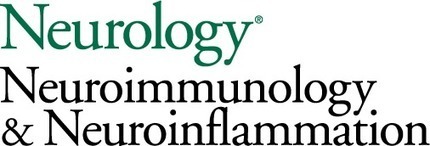


 Your new post is loading...
Your new post is loading...
